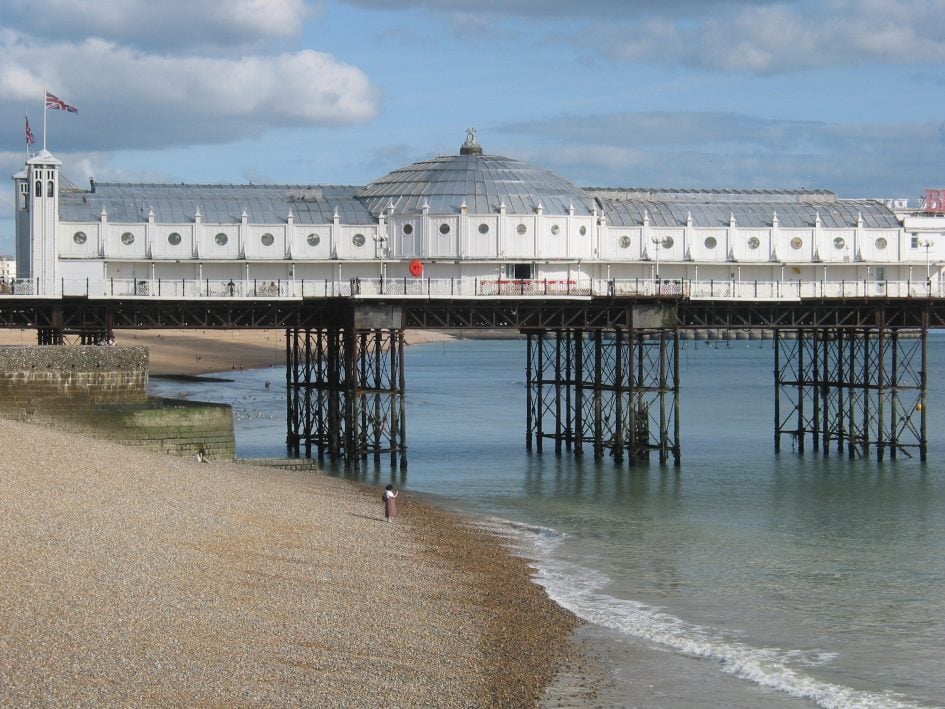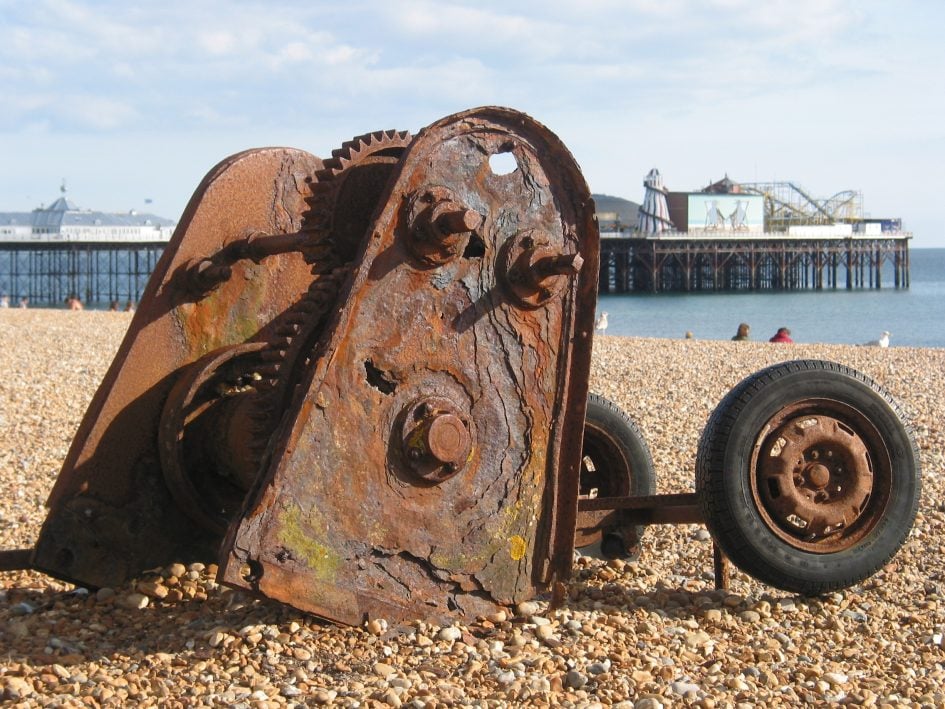Canon PowerShot G2 retro review
-
-
Written by Gordon Laing
Welcome back vintage camera lovers and join me on a journey back to mid-2001 when Canon launched the PowerShot G2. This pro-sumer camera was essentially a 4 Megapixel version of the original PowerShot G1 launched the previous year, which means you got full manual control, a bright lens, flip screen, hotshoe, and support for RAW files, although Canon did take the chance to make a few extra tweaks including an improved grip.
When it launched in 2001, the PowerShot G2 would set you back around $900 or £750, placing it roughly in the middle of the prosumer category at the time. These models were aimed at enthusiasts who wanted a step-up in control and quality over cheaper models, without the prohibitive costs of DSLRs at the time. For example, in 2001 Canon’s EOS D30 cost around three grand, so while enthusiasts may have desired its bigger sensor, SLR viewfinder and interchangeable lenses, the reality for most of us was a prosumer compact in the shopping trolley.
Today the PowerShot G series has enjoyed a surge in popularity with those looking for an old digicam that’s still a step-up over basic models of the early 2000’s. Models in the latter half of the G series can command prices over several hundred dollars or pounds, which I personally think is unjustified.
But earlier models in the series could scratch that retro itch at a much lower price. In 2024 I bagged a pair of untested PowerShot G2’s from eBay within a few weeks of each other for £15 and £21 respectively. It’s always a risk, and I’ve gambled on several G’s that turned out to be unfixable, but both my G2’s came to life given a new battery, so it could be worth a punt.
I actually reviewed the G2 back in 2001 as part of a prosumer group test in MacUser magazine, where I ranked it the overall winner. So let’s see if it still impresses 23 years later as I take it for a spin on the streets of Brighton! I’ll include a selection of sample images taken with my G2 in 2024!

Physically the G2 is clearly based on the same body as the G1, with things like the viewfinder, flash, ports and lens all occupying the same positions. But Canon’s overhauled the exterior, with a magnesium alloy front plate that’s cool to the touch with more curves than the angular-looking G1. Which you prefer is entirely personal, but most will agree the enlarged grip on the G2 makes it easier to hold. Admittedly not as much as other rivals at the time, but an improvement none-the-less.
As before the top surface is packed with controls and information to delight enthusiasts. On the upper right side you’ll find the mode dial, with an outer collar to power the camera into capture or playback. The shooting modes are identical to the G1 other than swapping its dedicated black and white position for colour effect which adds Vivid, Neutral and Sepia options along with Black and White.

Like the G1, there’s Program, Aperture and Shutter Priority as well as full Manual, although again there are some restrictions on aperture and shutter combinations due to both sharing the same iris mechanism. The exposure is adjusted using the joypad on the top right corner of the rear which falls naturally under your thumb. In Aperture and Shutter Priority, pushing left and right adjusts the settings, while in full Manual the aperture is reassigned to up and down pushes.
With the aperture wide-open at f2 though, the G2’s maximum shutter speed is limited to 1/500. Close it to f3.5 and you can increase the shutter to 1/640, while at f5 you can reach 1/800, but for the fastest shutter of 1/1000 you’ll need to close the aperture right down to f8.

In practice you cheat the system a little by selecting a faster shutter before opening the aperture back a little, but the final exposure may not be correct and the bottom line is you’ll find it hard to deploy large apertures under bright conditions. Meanwhile the large shutter button is surrounded by a redesigned zoom collar that adjusts the focal length with a single speed, but at least with fine increments and no lurching.

In the middle is a fully-featured hotshoe which lets you mount Canon’s Speedlite flashguns, making it ideal for event work. Canon quotes compatibility with the 220EX, 380EX, 420EX and 550EX, although the larger models do become ungainly on the relatively small body.
On the left side is an LCD information screen which looks similar to the G1, packing a wealth of shooting detail at a glance, including exposure, quality, drive mode, shots remaining, battery life and white balance. You’ll also see if the macro mode is enabled or not.

As before, the rear is home to a wealth of buttons providing dedicated access to settings including spot metering, macro mode, exposure lock, and one which toggles between exposure compensation, white balance, exposure bracketing, and flash compensation. White balance has Auto, six presets and a custom mode, while the menus now offer the option to switch between evaluative or centre-weighted metering in addition to a direct spot-metering button by the viewfinder.
Below the joypad, the SET button can now let you manually select one of three AF areas, an upgrade over the G1, while the menus let you assign whether the spot metering is linked to them or central. For those who prefer manual focusing, pushing the dedicated MF button on the left side now displays a useful distance scale on-screen along with a magnified view in the center.

Like the G1, composition is with a basic optical viewfinder or a flip-screen, neither of which appear to have significantly changed. The viewfinder remains rudimentary with the only markings being crosshairs to mark the center. The screen remains a highlight though, not only delivering 100% coverage and an image that’s viewable in bright light, but flipping and twisting to almost any position, allowing comfortable framing at high or low angles as well as forward to face you, or back on itself for protection.

Behind a door on the grip side you’ll find a Compact Flash slot which can take both traditional Type-I and thicker Type-II cards, including the IBM MicroDrive. Canon supplied the G2 with a 32MB card which was quite generous in 2001. Many used samples are sold with this card, but if you’re looking for a newer one I can recommend a SanDisk Ultra II 1GB card.

Behind a flap on the left side, you’ll find two ports: Digital output and a 9.5v DC input. The former delivers a USB output, and the latter allows internal charging or mains power, but both are proprietary sockets so will only work with Canon’s supplied accessories – don’t lose them!
Alongside the flap is a 3.5mm AV output for TV slideshows. Canon also supplies a handy infra-red remote control which can adjust the zoom and fire the shutter, or be used to operate a slideshow. In fact remote control is a big thing for the G2 which is also supplied with software that lets you control it over USB from a computer, including a live image. Tethered shooting is something normally reserved for high-end DSLRs, so it’s nice to have it here for studio photographers.

The G2’s powered by the same BP-511 Lithium Ion pack as the G1, a battery that Canon used on many different cameras over a long period. As such it’s easy to get a replacement today in the likely event an original has given up the ghost. The compartment remains under the camera, with the tripod thread uncomfortably positioned on the opposite side – that said, it does mean you should be able to access the battery when using smaller tripod plates. The battery is charged inside the camera using the supplied CA-560 AC adapter. This also provides the camera with a DC power source, but if you no longer have the adapter, there’s a variety of BP-511 external chargers available.
The PowerShot G2 inherits the same lens as the G1, a 7-21mm f2-2.5 zoom, equivalent in coverage to 34-102mm, with a minimum focusing distance of 6cm. That sounds close but some rivals can focus even closer. Like the G1 it’s branded as a Canon lens, although as before I’m pretty sure it’s an optical unit shared with several other popular models at the time including the Sony S70 and Epson 3000Z. That said, Canon may have applied its own coatings to it.

There’s no filter thread as standard, but the optional LA-DC58 adapter fits over the extending lens and equips the camera with a 58mm thread. This also lets you mount one of three optional and somewhat hefty lens adapters: The WC-DC58 multiplies the coverage by 0.8x, widening the short-end to an equivalent of 28mm. Meanwhile the TC-DC58, multiples it by 1.5x, extending the reach to an equivalent of 153mm. And finally the 250D close-up lens does just that, improving the modest macro capabilities a little. Below is the camera focused as close as it could with the lens wide and the aperture at f2.

Behind the lens is a 1/ 1.8in CCD sensor with 4 Megapixels. This represents the headline upgrade over the G1 and is the same sensor employed by most prosumer cameras in 2001. It delivers a maximum resolution of 2272×1704 pixels, giving it a roughly 10% boost in detail over the G1 or other 3.3 Megapixel models, when measured horizontally or vertically.

From the menus you can choose three lower resolutions, as well as three levels of JPEG compression. Best quality SuperFine JPEGs at the full resolution typically measure between 1.3 and 2MB each. Like the G1, you can alternatively shoot in the RAW format, albeit I believe now with an extended dynamic range which I’ll demonstrate in a moment. When set to RAW, there’s no resolution or compression options. CRW RAW files measure around 2.7 MB each.
The G2 shares the same ISO sensitivity options as the G1, starting at an impressively low 50, with higher 100, 200 and 400 ISO options available. An Auto option is also offered, but only chooses between 50 and 100 ISO as the images can become quite noisy at the higher settings. To be fair though, this is no different from other camera sharing the same sensor, and at least Canon offers a cleaner 50 ISO option that’s lacking on many rivals. You could also adjust some of the image parameters from the menus, a feature that’s standard today but unusual back then.

As for the lens, the bright aperture should allow you to stick towards the lower end of the ISO range for the best quality, but don’t expect a bokeh monster. The restricted shutter and aperture combinations mean you’ll rarely be able to use the large apertures in daylight, and even under dim conditions in a macro environment you won’t see much background blur at f2.
The G2 can also film video clips at either 160×120 pixels for two minutes, or 320×240 pixels for 30 seconds, both at a maximum frame rate of 15fps with no control over the exposure, or indeed the zoom once you start filming. Video clips are at least stored with sound though.

Right, now it’s time to fast-forward 23 years after the G2 was launched to see how it performs in the present day. Like many Canon cameras of this era, it’s fairly easy to find replacement BP-511 battery packs and compatible Compact Flash cards, see links in description.
You’re not tied to the proprietary cables either, as external BP-511 chargers mean you don’t need the original AC adapter, while a wealth of USB card readers mean you won’t need the data cable either, unless you fancy trying the tethering software on an age-appropriate computer of course.

Even the RAW files can be read by recent software. I opened a CRW RAW file from the G2 in the latest version of Adobe Camera RAW where adjusting the shadows and highlights sliders to their extremes really is recovering tonal detail that was previously hidden.
The AVI movie files also played back fine in QuickTime on my Mac and could also be edited directly within Final Cut without converting them first. So all in all, a very practical vintage camera to use today.

Canon PowerShot G2 verdict 23 years later…
When I reviewed the PowerShot G2 back in 2001, it stood out in its prosumer peer group with a winning combination of features and quality. Sure, before long it was out-gunned by models like Sony’s F707 and Nikon’s COOLPIX 5000, but these early 5 Megapixel rivals came in at a higher cost. For most enthusiasts in 2001, the PowerShot G2 simply did everything they wanted. It inherited the bright lens, manual control, RAW files, hotshoe, and flip-out screen of the original G1, but addressed some issues, adding selectable focus areas, evaluative metering, and colour effects, while reducing fringing, and of course upgrading to the latest sensor. And while an extra Megapixel doesn’t sound like a great deal, in practice the 4 Megapixel sensor of the G2 delivered better-looking images overall than the G1. Today I’m not particularly fond of the curvier shape and champagne finish, but there’s no denying the quality and feature-set is compelling for the typical used prices.
As most of you know, Canon released a new PowerShot G almost every subsequent year, initially boosting the resolution and lens range, but later removing key features like RAW and the flip screen. This rightly caused an outrage with reviewers and passionate G-owners alike, forcing Canon to reinstate them on future models, before splitting the line in 2012 with the new G1 X sporting a larger sensor. Then in 2014 the standard G series switched to the 1in sensor, with the most recent models being the G7X III and G5X II, both launched in 2019.
The current popularity of digital compact cameras, appeal of vintage, and lack of any new models has resulted in later PowerShot G models commanding what I think are ridiculous prices on the used market. Often hundreds for something like a G16. I’d say don’t encourage these prices and instead aim towards the older models like the G2 which I bagged for less than £25 in working order. It’ll scratch your itch for a vintage digital experience, delivering surprisingly good-looking photos, seriously retro video, and crucially remains easy to connect and power today.
Buy vintage cameras from MPB. Sell your used gear to MPB. Check ebay to find vintage gear. Lost, deleted or corrupted photos? I recover mine with Stellar Photo Recovery. PS - if you enjoy my reviews, videos and guides, you can support me my treating yourself to a copy of my In Camera book, an official Cameralabs T-shirt or mug, or by treating me to a coffee! Thanks!

